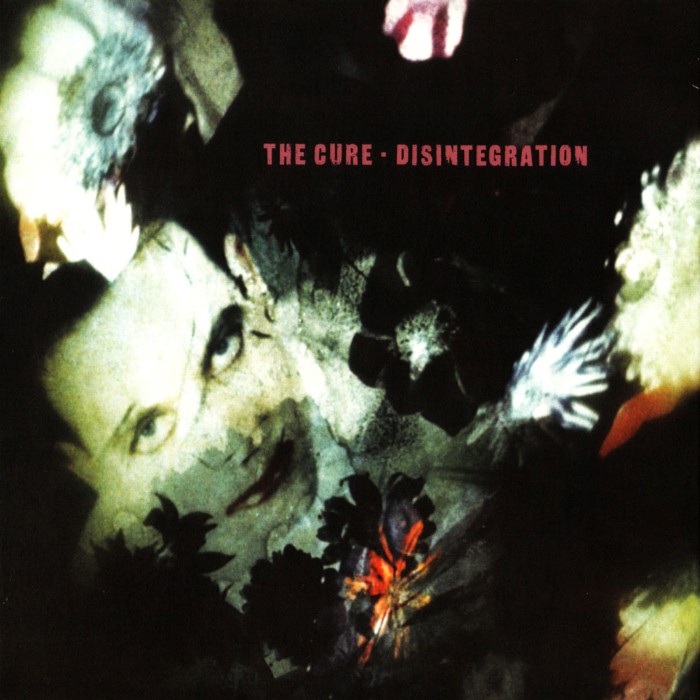Disintegration by The Cure

Disintegration is the eighth studio album by English alternative rock band The Cure, released on 1 May 1989 by Fiction Records. The record marks a return to the introspective and gloomy gothic rock style the band had established in the early 1980s. As he neared the age of thirty, vocalist and guitarist Robert Smith had felt an increased pressure to follow up on the group's pop successes with a more enduring work. This, coupled with a distaste for the group's new-found popularity, caused Smith to lapse back into the use of hallucinogenic drugs, the effects of which had a strong influence on the production of the album. The Cure recorded Disintegration at Hookend Recording Studios in Checkendon, Oxfordshire, with co-producer David M. Allen from late 1988 to early 1989. During production, founding member Lol Tolhurst was fired from the band. In spite of Fiction's fears that the album would be "commercial suicide", Disintegration became the band's commercial peak. It charted at number three in the United Kingdom and at number twelve in the United States, and produced several hit singles including "Lovesong", which peaked at number two on the Billboard Hot 100. Disintegration remains The Cure's highest selling record to date, with more than three million copies sold worldwide. Disintegration was also a critical success, eventually being placed at number 326 on Rolling Stone magazine's list of the "500 Greatest Albums of All Time". Stephen Thomas Erlewine of Allmusic called it the "culmination of all the musical directions The Cure were pursuing over the course of the '80s." Rolling Stone readers have selected the album their number 9 pick of The 10 Best Albums of the Eighties in which Rolling Stone writes "In an early episode of South Park Kyle Brofloski expressed a rare musical opinion: 'Disintegration is the best album ever!' He may have been giddy over Robert Smith's recent defeat of the evil Mecha-Streisand, but the sentiment has been shared by goths and non-goths for over 20 years."
<i>The Head on the Door</i> represented The Cure’s first big breakthrough: buoyed by bona fide pop melodies, the 1985 album marked a definitive break with the claustrophobic intensity of the goth icons’ early-’80s run. Four years later, <i>Disintegration</i> would enlarge their vision to stadium-sized proportions, confirming The Cure’s status as alt-rock titans. Where <i>Disintegration</i>’s predecessor, 1987’s giddy <i>Kiss Me Kiss Me Kiss Me</i>, swung wildly between opposing feelings, <i>Disintegration</i> is a deep dive into a singular mood: dreamy, wistful and deeply melancholy, imbued with all the drama of standing at the railing of a rain-slicked ship as it sails away and gazing at the lover left behind. <br /> <i>Disintegration</i> fully sharpened The Cure’s pop instincts: “Pictures of You”, “Lovesong” and “Fascination Street” are as immediate and indelible as anything in their catalogue. But the band have tempered their emotions, so that even the major-key tonalities of a track like “Plainsong” aren’t as blindingly bright as on the previous album; they’re a deeper, richer hue, like beams of sunlight penetrating aquamarine depths. <br /> The textures are remarkably lush: a sumptuous mix of guitars and synths so swirled together that it’s tough to say where one instrument ends and the next begins. That oceanic mood carries through in the way songs flow from one to another: the churning chords of “Last Dance” give way to the relative calm of “Lullaby”, and in the back half, the stretch from “Fascination Street” through “Homesick” comprises a kind of suite. There’s an echo of <i>Pornography</i>’s bleakness here, but this time, the descent into despair is strangely welcoming—it’s as though Robert Smith and his bandmates had discovered that on the coldest nights, wrapping up in one’s own loneliness is the only way to stay warm.
